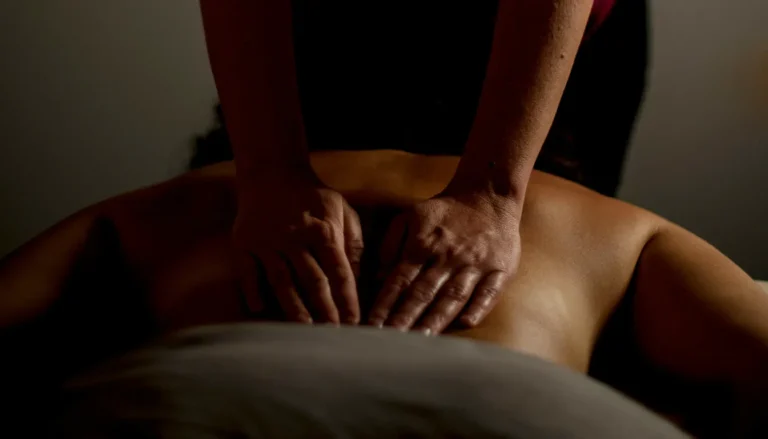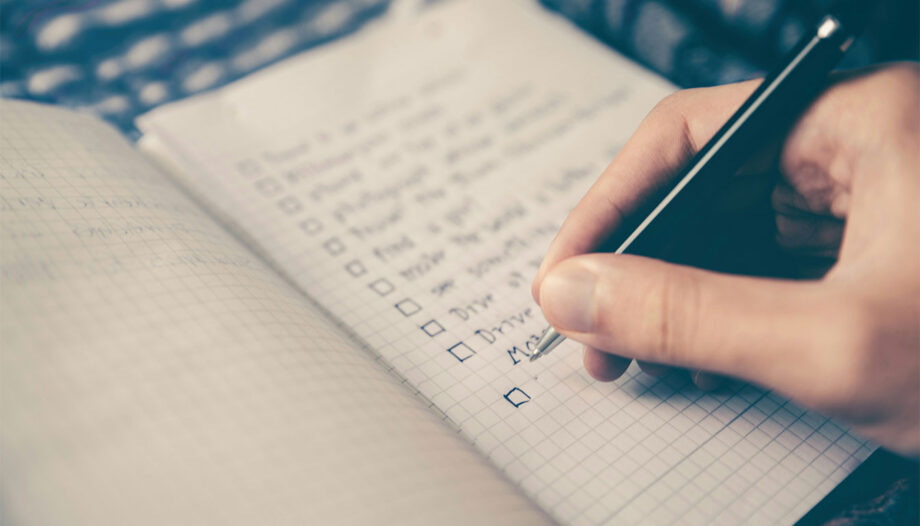This guide offers clear, evidence-led answers for readers in the United Kingdom curious about practical benefits of touch.
Touch is a basic human need. Research links gentle therapy to changes in hormones — lower cortisol with rises in oxytocin and serotonin — which may ease stress and lift mood.
Physical gains include better local circulation, support for immune function via raised white cell activity, increased flexibility and relief from common aches such as back, neck and soft-tissue pain.
Psychological effects are also notable: improved relaxation, mood elevation and often better sleep, since serotonin helps regulate sleep chemistry.
We will explore pain relief, stress management, sleep improvement and everyday function, while stressing the value of qualified practitioners and tailored sessions as part of a wider care plan.
For an accessible review of the evidence and practical pointers, see this summary on the subject.
Key Takeaways
- Pleasurable touch triggers nerve pathways and alters stress-related hormones.
- Therapy may improve circulation, immunity markers and flexibility.
- People report less pain and better sleep after suitable sessions.
- Use qualified practitioners and personalise treatment to goals.
- It works best as a complement to medical advice, not a replacement.
How can massage help your health and wellbeing today?
Many people book hands-on therapy to ease sore muscles and sleep more soundly. Sessions often offer immediate relief from back, neck or shoulder tightness and a clearer, calmer mood.
What people seek: pain relief, stress reduction and better sleep
Top reasons for appointments include easing local pain from desk work or sport, reducing stress, and improving sleep quality. Clinical findings note lower cortisol and higher oxytocin and serotonin after suitable sessions.
Quick overview of benefits for body and mind
Common quick wins are a softer feel around problem areas, a calmer nervous system and a general sense of relaxation. Regular visits may build cumulative gains: steadier sleep onset, lighter mood and improved movement.
- Unwind after work, recover after exercise or reset during busy periods.
- Tactile input often reassures the nervous system while easing physical tightness.
- Combine sessions with gentle movement, hydration and good sleep habits to extend perceived benefits.
| Reason people book | Immediate result | Ongoing benefit |
|---|---|---|
| Back, neck or shoulder pain | Noticeably looser muscles | Improved movement patterns |
| High stress levels | Calmer breathing and mood | Better sleep onset and focus |
| Poor sleep | Faster relaxation after session | More consistent rest with regular sessions |
| Post-exercise tightness | Reduced local soreness | Faster recovery between workouts |
Tip: Set one or two clear goals—less pain or deeper relaxation—so you can judge results over a few appointments.
The science behind massage: hormones, the nervous system and blood flow
Biological signals during touch-based therapy reveal why sessions often feel restorative. Short-term drops in cortisol accompany rises in oxytocin and serotonin, a trio linked with calm, bonding and steadier mood.
Stress hormone shifts: lower cortisol, higher oxytocin and serotonin
Research notes reduced stress hormone levels and lower arginine-vasopressin, which relates to blood pressure. These chemical shifts, even if modest, help explain improved mood and relaxation after a session.
How moderate pressure affects the nervous system and pain signals
Moderate pressure activates deep pressure receptors more than light touch. The nervous system then interprets steady, comfortable pressure as safe, which can interrupt pain signalling and ease tension in muscles.
Circulation and lymph: improved blood flow, tissue health and immune support
Local blood flow and lymph movement increase, supporting tissue nourishment and waste clearance. Studies report rises in white blood cell activity and small falls in heart rate and blood pressure during or shortly after treatment.
Inflammation and recovery: what current research suggests
Emerging findings show reductions in some inflammatory cytokines (eg IL-4, IL-10), suggesting benefits for recovery after exercise and flare-like discomfort. Effects are dose- and pressure-dependent, so choose a therapist who understands calibration, and consider reading about the best options for stress.
Evidence-backed benefits for your body and mood
A growing body of research links hands-on therapy with measurable reductions in pain and improved function. Trials report changes in hormones and inflammatory markers that match many reported improvements in mood and sleep.
Back and neck pain: relaxation and deep tissue approaches
Short courses work. In one trial of 401 adults with chronic low back pain, ten weekly sessions of relaxation or structural approaches reduced pain and improved daily function versus usual care. Deep tissue work has shown similar relief to the same technique plus NSAIDs in controlled research, offering a non-pharmacological option for suitable cases.
Knee and hand arthritis: mobility, grip strength and symptom relief
For knee osteoarthritis, a trial of 200 people found weekly whole-body sessions for eight weeks improved pain and mobility versus light touch or standard care. For hand and wrist arthritis, daily moderate-pressure self-treatment plus weekly therapist sessions reduced pain and anxiety and improved grip, with some reports of up to 57% pain drop.
Fibromyalgia, mood and sleep
A 2014 PLoS One review showed programmes of five weeks or more improved pain, anxiety and depression in fibromyalgia. Hormonal shifts—lower cortisol and higher serotonin—may help explain better sleep and steadier mood over time.
Cardiovascular and nervous system effects
Many studies note modest falls in heart rate and blood pressure during or after sessions, reflecting a shift towards rest-and-digest physiology. Improved circulation and local blood flow also support tissue recovery.
“Consistent sessions tend to produce clearer benefits; tracking pain scores, range of motion and sleep helps spot what works.”
Realistic expectations: benefits often build with regular visits and may reduce if treatment stops. Hands-on care is best used alongside medical advice, movement and self-management to sustain gains.
| Issue | Evidence-based outcome | Typical timeframe |
|---|---|---|
| Back/neck pain | Less pain, better function | Several weekly sessions (eg 8–10) |
| Knee osteoarthritis | Improved pain and mobility | Weekly for ~8 weeks |
| Hand arthritis | Reduced pain, better grip | Daily self-care + weekly therapist |
Choosing the right massage and staying safe in the UK
Picking the right approach ensures sessions meet practical goals and stay safe. Below is a quick guide to match aims with common options, plus safety checks to discuss before booking.
Match types to goals
Swedish uses light strokes, kneading and tapping to ease aches, improve circulation and support lymphatic drainage. It suits whole‑body relaxation and gentle recovery.
Sports targets deeper layers to address adhesions from microtrauma, aid muscle glide and reduce inflammation after exercise.
Spa‑style sessions focus on ambience and aromatherapy for deep relaxation and stress reduction.
Pregnancy work has been linked to less back and leg pain, lower anxiety and better sleep; always choose a qualified practitioner.
Safety first
Consult a GP before booking if you have actively inflamed joints, fever, a rash, severe osteoporosis, uncontrolled high blood pressure, varicose veins or damaged/eroded joints. These are key contraindications to note.
Finding a qualified, insured therapist
Look for recognised professional body membership, public liability insurance and clear hygiene standards. Ask about training, scope of practice and whether treatments suit your symptoms.
Session tips
Prioritise moderate pressure: therapeutic pressure should feel firm but comfortable. Light touch can be stimulating rather than relaxing.
Give real‑time feedback. Sessions should not increase pain; tell the therapist if something hurts or feels wrong.
- Agree focus areas and pressure at the start.
- Ask about aftercare: hydrate and move gently.
- Note any sleep, mood or pain changes to guide future sessions.
| Goal | Best option | What to ask |
|---|---|---|
| Relaxation | Swedish or spa | Pressure level, aromatherapy use |
| Post‑exercise recovery | Sports | Experience with sports injury, deep tissue techniques |
| Pregnancy comfort | Pregnancy massage | Qualifications, safe positioning |
Conclusion
Consistent treatment, tends to lower stress hormone levels while improving circulation and easing muscle tension.
Brief courses often reduce pain, lift mood and improve sleep by shifting cortisol, raising oxytocin and serotonin and boosting blood and lymph flow. These changes help the body and the mind work better together.
Choose a therapist who tailors pressure to your needs, uses moderate techniques and holds proper qualifications. Track pain, sleep and range of motion to judge progress, and consult a GP for active or complex symptoms.
With clear goals and regular sessions, many people notice steadier mood, less back discomfort and better nights — a practical route to lasting benefits for overall health.
FAQ
What benefits might I expect from regular massage sessions?
Regular treatment often reduces muscle tightness, eases joint stiffness and improves circulation. Many people report lower stress hormone levels and better mood through increased serotonin and oxytocin. Improved sleep and greater range of motion are common outcomes, too.
Which types of treatment suit specific goals like pain relief or relaxation?
For general relaxation, Swedish therapy uses long, gliding strokes. Sports therapy targets muscles and movement for athletes. Deep tissue focuses on chronic tightness and back or neck pain. Pregnancy and lymphatic approaches suit specific needs such as swelling or circulation support.
What does research say about effects on hormones and the nervous system?
Evidence indicates treatment can lower cortisol while raising oxytocin and serotonin, helping to calm the nervous system. Moderate pressure stimulates parasympathetic activity, which often reduces heart rate and improves blood flow to tissues.
Can treatment improve blood pressure or cardiovascular health?
Sessions may produce short-term reductions in blood pressure and heart rate. Repeated treatments can support better circulation and stress management, which indirectly benefits cardiovascular markers, though they are not a substitute for medical care.
Is treatment helpful for chronic conditions like fibromyalgia or arthritis?
Many people with fibromyalgia report lower pain, reduced anxiety and improved sleep after tailored sessions. In osteoarthritis of the knee or hand, manual therapy can enhance mobility and grip strength while easing symptoms when combined with exercise and medical guidance.
Are there risks or times when I should avoid treatment?
Avoid intensive work over recent injuries, open wounds, deep vein thrombosis or uncontrolled cardiovascular conditions. Always consult your GP for acute illness, pregnancy complications or cancer. A qualified therapist will screen for contraindications during your first appointment.
How do I choose a qualified, insured therapist in the UK?
Look for membership of recognised bodies such as the Federation of Holistic Therapists (FHT) or the Complementary and Natural Healthcare Council (CNHC). Confirm public liability insurance, ask about qualifications, and request references or reviews before booking.
What should I tell the therapist before a session?
Share medical history, current medications, recent surgeries, allergies and specific areas of pain or tension. Mention preferred pressure levels and any past experiences that were uncomfortable. Clear communication helps tailor the session safely.
How often should I have sessions to see meaningful results?
Frequency depends on goals. For acute relief, weekly sessions for a few weeks often help. For maintenance and stress management, monthly or fortnightly visits suit many people. Your therapist will recommend a plan based on response and lifestyle.
What should I do after a session to maximise benefits?
Drink water to aid circulation and toxin removal, rest if needed, and avoid intense exercise for 24 hours if tissue work was deep. Gentle stretching and warm baths can extend relaxation and reduce soreness.
Can therapy reduce anxiety and symptoms of depression?
Many studies and clinical reports show reductions in anxiety and depressive symptoms after sessions, linked to lowered cortisol and improved mood-regulating hormones. It works best as part of a wider support plan that may include therapy, exercise and medical care.
Will treatment help me sleep better?
Yes — by lowering physiological arousal and encouraging parasympathetic activity, sessions often improve sleep onset and quality. Timing matters: earlier in the day may suit some, while an evening session can aid immediate relaxation for others.
What pressures and techniques should I request for comfort and safety?
Ask for moderate, comfortable pressure and encourage the therapist to check in during treatment. For deep tissue work, request gradual increases and clear stop signals. Consent and ongoing feedback prevent excessive soreness and ensure safety.
Are there simple self-care techniques to complement professional treatment?
Self-massage with a foam roller or ball, gentle stretching, mindfulness breathing and short walks boost circulation and prolong results. Hydration and adequate sleep also support recovery and mood between sessions.








